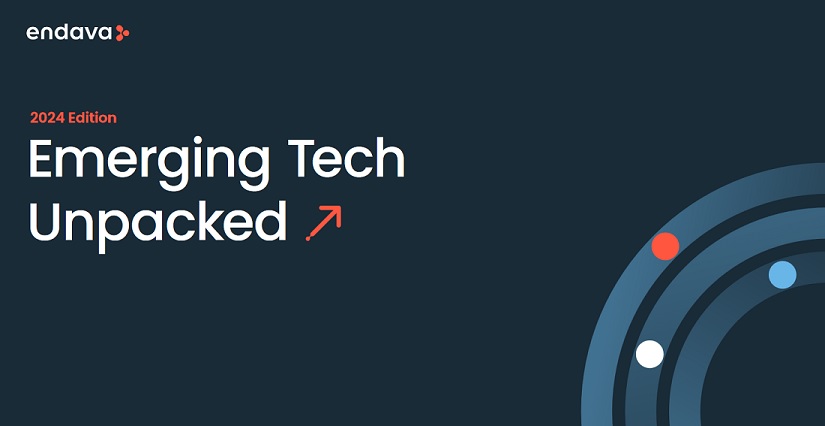Over the past decade, the pace of technological progress has reached unprecedented levels, where fads both quickly rise and shrink in popularity. From AI and composability to augmented reality and quantum computing, the toolkit of emerging technologies is continuing to expand, creating a complex set of opportunities and challenges for businesses to address.
In order to keep pace with competitors, avoiding new models and ideas is not an option. It's critical for organizations to determine whether an idea has transformative properties or is just a flash in the pan — a challenge tackled in Endava's new 2024 Emerging Tech Unpacked Report.

The main takeaway from the report is that, due to the ongoing uncertainty within the tech sector, most decision makers are choosing technologies that offer more noticeable, near-term benefits — such as AI, which nearly 50% of respondents ranked as a top-three initiative. However, despite the space that AI now takes up in the conversation around emerging technology, there are other areas of focus that also show ROI potential.
Additional insights from the report include:
■ Unsurprisingly, AI and generative AI were the top two priorities for organizations included in the study, with only 3% declaring AI not relevant to their business. It is understandable that companies are putting large amounts of resources into AI, particularly generative AI, as many leaders expect it to drive near-term and long-term benefits.
■ After AI, big data and predictive analytics emerged as the third and fourth-highest priorities among organizations. Over 30% of respondents have already implemented both technologies, and a further 30% are in the process of doing so.
■ Internet of things (IoT) was the fifth-highest priority for the study's participants. 40% of respondents already use IoT in some capacity, making it the most implemented technology in this year's study. Though IoT has been around for a while and is not as buzzy as other topics, organizations still see its appeal and application to their business.
■ Virtual reality is one area of technology that is still being treated with caution, as leaders struggle to see it driving business results. 53% of respondents said that the metaverse would be moderately or very relevant, yet only 17% have actually implemented a strategy. With Apple's recent high-profile launch of the Vision Pro, it remains to be seen whether the technology will ever meet the hype it received a few years ago.
All the technologies outlined in the report need quality, well-structured data to be successfully implemented. Data is crucial for training AI models, delivering accurate predictive data, facilitating IoT decision-making, and more. While organizations have different choices for what to invest in, many will start to prioritize data infrastructure and management.
With so many different options for adopting technology, organizations face a daunting landscape filled with promising opportunities and difficult challenges. As businesses navigate these complexities, they must consider how these technologies fit their company's unique circumstances and the timeline for return on investment. As the digital toolkit will undoubtedly further expand in the coming years, businesses will need foresight, adaptability and creativity to use technology to problem solve, and those that think outside of the box will be the most successful.
